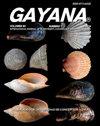Dimorfismo sexual y morfología funcional de las extremidades de Loxosceles laeta (Nicolet, 1849)
IF 0.2
4区 生物学
Q4 ZOOLOGY
引用次数: 0
Abstract
Alometric relationships among morphological characters provide evidence of the evolutionary forces that act on a particular trait. Spiders that live on the ground are less dimorphic than orb web spiders, which have been attributed to their different reproductive and foraging strategies. It has been proposed that long legs with respecto to the body size in males, yields an optimization of locomotion costs. The aim of this study was to characterize the variability of the length of legs in the Chilean recluse spider Loxosceles laeta and to compare the alometric relationships of the locomotor legs in males and females. Both sexes showed negative alometric relationships between the length of the legs and the lengtgh of the cephalotorax, ie spiders of large body size have proportionally shorter legs than that of small body size, which may be explained by bio mechanic causes. The males showed longer legs than females both in absolute and relative terms. That means that males have a higher locomotor efficiency than females. The relative small body size is related to a low transportation cost, which associated with long legs is the expected morphology for the more active and mobile males in this species.Loxosceles laeta肢体的性别二态性和功能形态(Nicolet, 1849)
形态特征之间的异速关系提供了作用于特定性状的进化力量的证据。生活在地面上的蜘蛛不像圆网蜘蛛那样具有二态性,这被归因于它们不同的繁殖和觅食策略。有人提出,男性的长腿相对于身体大小,产生了运动成本的优化。本研究的目的是表征智利隐蛛Loxosceles laeta腿长度的变异性,并比较雄性和雌性运动腿的距离关系。两性头腹蛛的腿长与头腹蛛的腿长呈负比例关系,即体型大的蜘蛛的腿比体型小的蜘蛛的腿短,这可能是生物力学的原因。无论是绝对还是相对而言,男性的腿都比女性长。这意味着雄性比雌性有更高的运动效率。相对较小的体型与较低的运输成本有关,这与长腿有关,这是该物种中更活跃和移动的雄性的预期形态。
本文章由计算机程序翻译,如有差异,请以英文原文为准。
求助全文
约1分钟内获得全文
求助全文
来源期刊

GAYANA
Agricultural and Biological Sciences-Aquatic Science
CiteScore
0.60
自引率
0.00%
发文量
5
期刊介绍:
GAYANA is a scientific journal published by Universidad de Concepción, Chile. It is the modern version of Gayana Oceanología and Gayana Zoología. Therefore its numeration starts at volume 63(1).
GAYANA covers all aspects of zoology and oceanographic research. It is structured in five sections, defined by subject or discipline: Ecology, Biodiversity and Taxonomy, Earth Sciences, Evolutionary, and Applied Biology and Environmental Biology. Each section is in charge of an editor who receives and manages the manuscripts sent for evaluation in close collaboration with the editorial board.
 求助内容:
求助内容: 应助结果提醒方式:
应助结果提醒方式:


